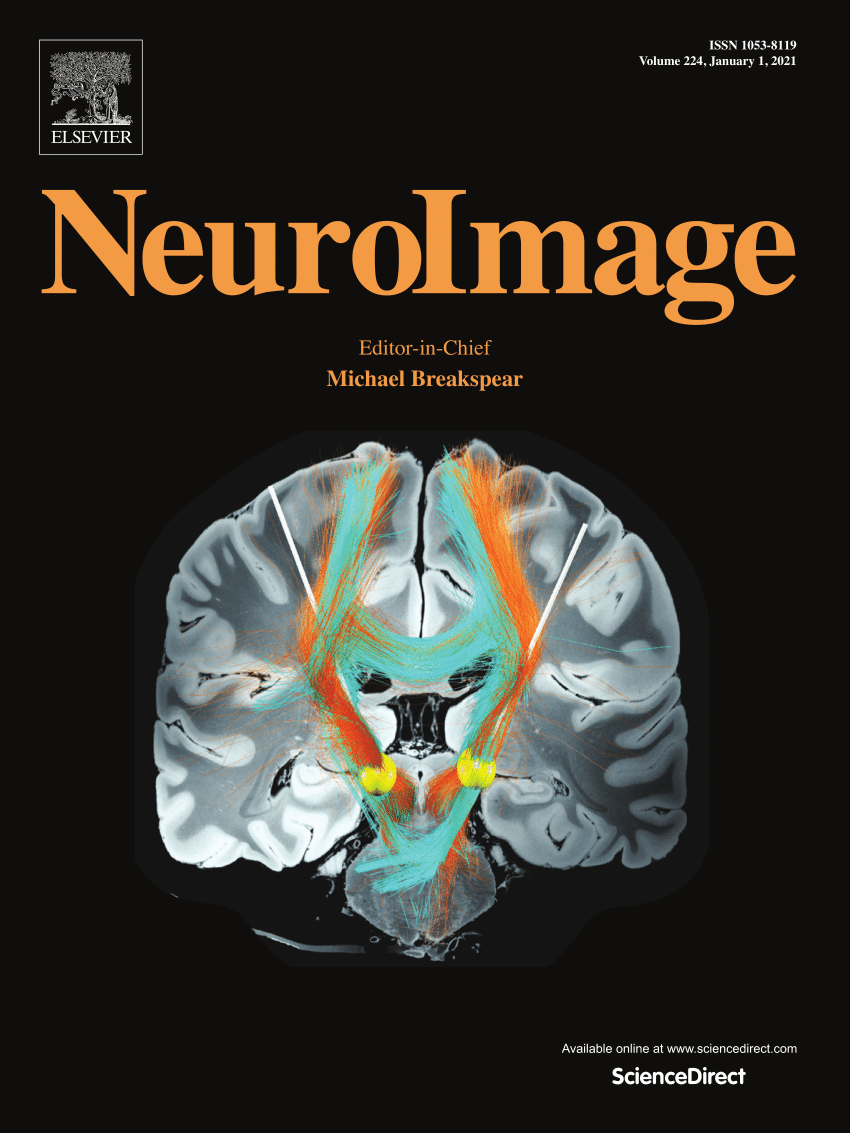元控制状态的神经生理学动态:脑电图对冲突调节的启示
IF 4.5
2区 医学
Q1 NEUROIMAGING
引用次数: 0
摘要
了解元控制和冲突调节的神经机制对于深入了解认知的灵活性和持久性至关重要。本研究采用脑电图(EEG)、脑电波束成形和定向连接分析来探讨不同的元控制状态如何在神经生理水平上影响冲突调节。元控制状态是通过改变改良的侧翼任务中各实验块的一致和不一致试验频率来操纵的,并对行为和电生理测量进行了分析。行为数据证实了实验操作的有效性,显示在冲突调节增加时,持久性偏差增加,灵活性偏差减少。在电生理方面,θ波段活动与行为数据一致,表明θ振荡反映了预期的元控制偏差与实际任务需求之间的不匹配。α和β波段的动态变化在不同的实验区块有所不同,但这些变化并不直接反映行为效应。反应后的α和β活动在持续偏差状态下更为明显,这表明神经复位机制正在为未来的认知需求做准备。通过使用一种新的人工神经网络方法,定向连接分析表明在持续状态下区域间交流增强,这表明自上而下的控制和感觉运动整合更强。总体而言,θ波段活动与元控制过程密切相关,而α和β波段则在为即将到来的任务重置神经系统方面发挥作用。这些发现加深了对元控制和冲突监控所涉及的神经基底的理解,强调了不同频段在这些认知过程中的不同作用。本文章由计算机程序翻译,如有差异,请以英文原文为准。
Neurophysiological dynamics of metacontrol states: EEG insights into conflict regulation
Understanding the neural mechanisms underlying metacontrol and conflict regulation is crucial for insights into cognitive flexibility and persistence. This study employed electroencephalography (EEG), EEG-beamforming and directed connectivity analyses to explore how varying metacontrol states influence conflict regulation at a neurophysiological level. Metacontrol states were manipulated by altering the frequency of congruent and incongruent trials across experimental blocks in a modified flanker task, and both behavioral and electrophysiological measures were analyzed. Behavioral data confirmed the experimental manipulation's efficacy, showing an increase in persistence bias and a reduction in flexibility bias during increased conflict regulation. Electrophysiologically, theta band activity paralleled the behavioral data, suggesting that theta oscillations reflect the mismatch between expected metacontrol bias and actual task demands. Alpha and beta band dynamics differed across experimental blocks, though these changes did not directly mirror behavioral effects. Post-response alpha and beta activity were more pronounced in persistence-biased states, indicating a neural reset mechanism preparing for future cognitive demands. By using a novel artificial neural networks method, directed connectivity analyses revealed enhanced inter-regional communication during persistence states, suggesting stronger top-down control and sensorimotor integration. Overall, theta band activity was closely tied to metacontrol processes, while alpha and beta bands played a role in resetting the neural system for upcoming tasks. These findings provide a deeper understanding of the neural substrates involved in metacontrol and conflict monitoring, emphasizing the distinct roles of different frequency bands in these cognitive processes.
求助全文
通过发布文献求助,成功后即可免费获取论文全文。
去求助
来源期刊

NeuroImage
医学-核医学
CiteScore
11.30
自引率
10.50%
发文量
809
审稿时长
63 days
期刊介绍:
NeuroImage, a Journal of Brain Function provides a vehicle for communicating important advances in acquiring, analyzing, and modelling neuroimaging data and in applying these techniques to the study of structure-function and brain-behavior relationships. Though the emphasis is on the macroscopic level of human brain organization, meso-and microscopic neuroimaging across all species will be considered if informative for understanding the aforementioned relationships.
 求助内容:
求助内容: 应助结果提醒方式:
应助结果提醒方式:


